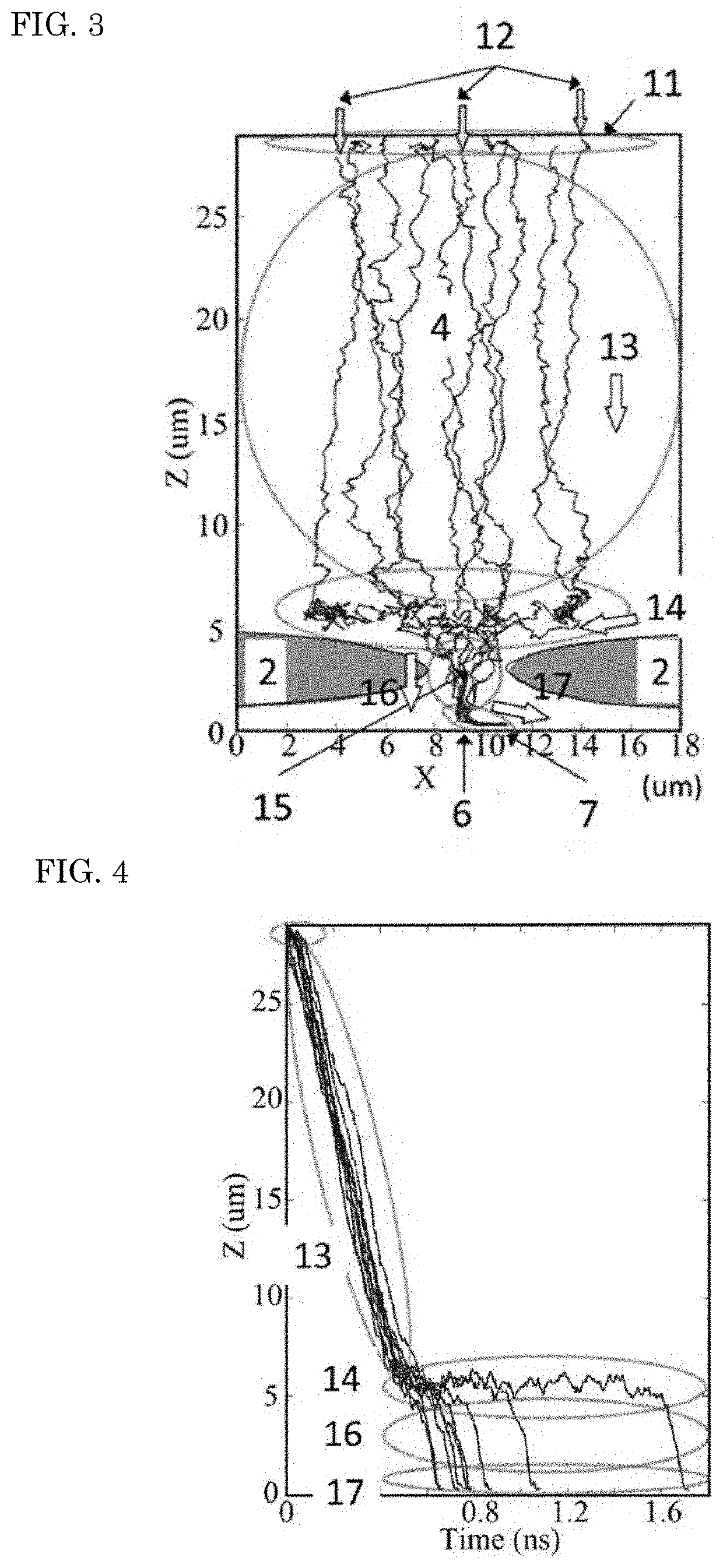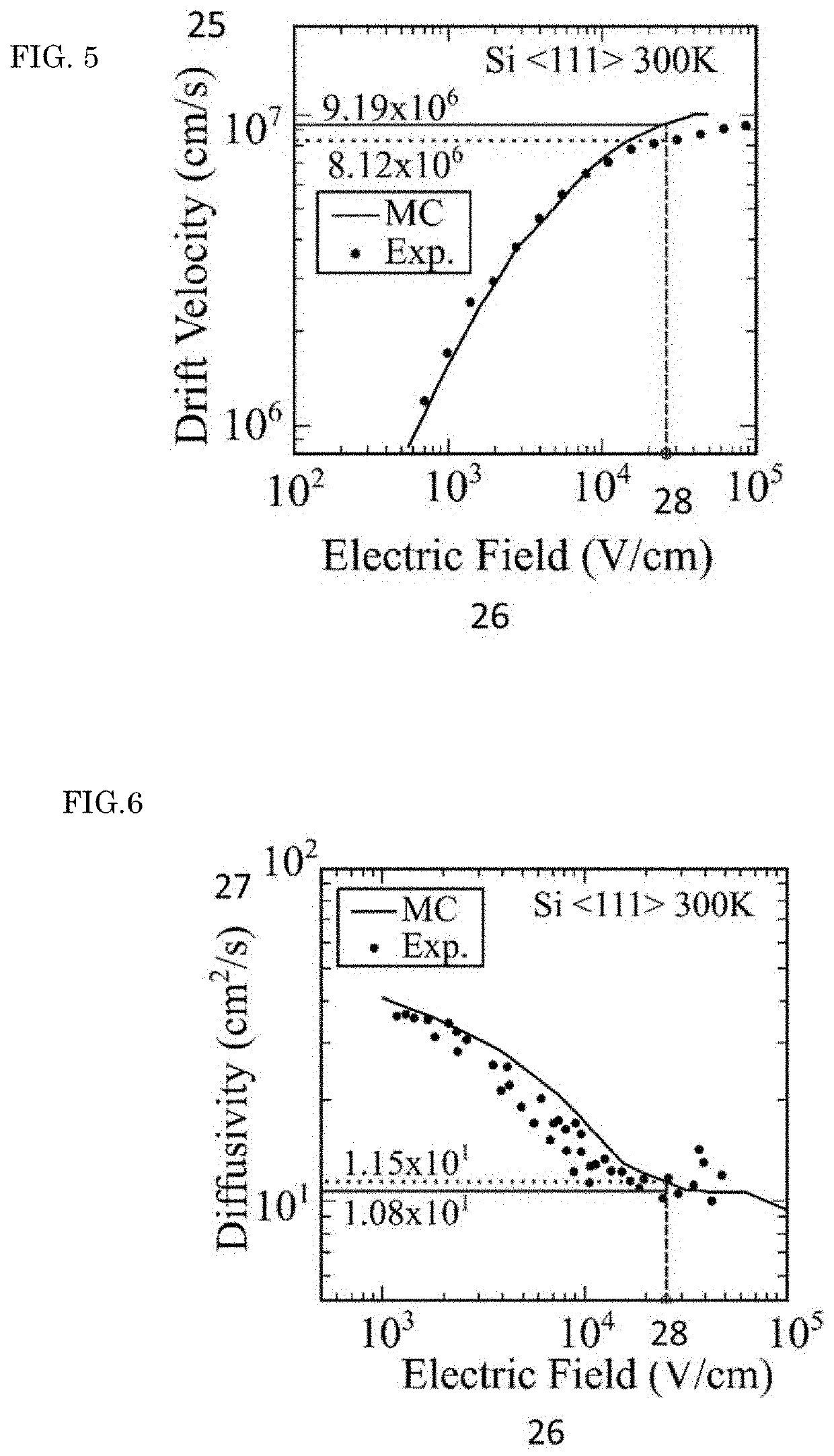High-speed image sensor
a high-speed image sensor and sensor technology, applied in the field of high-speed imaging technology, can solve the problems of large spread of arrival time, inability to distinguish separately, and inability to reduce vertical mixing due to the different penetration depth and vertical diffusion due to the vertical component of random motion
- Summary
- Abstract
- Description
- Claims
- Application Information
AI Technical Summary
Benefits of technology
Problems solved by technology
Method used
Image
Examples
first embodiment
1. First Embodiment
[0117]FIG. 7 shows a cross section 29 of a pixel of an image sensor according to a first embodiment of the invention. The image sensor includes three stacked layers: a light collection layer 30, an imaging layer 31, and a driver layer 32. The planar view is shown in FIG. 2.
[0118]The imaging layer and the driver layer are electrically connected through a bump layer 33. The light collection layer 30 includes a micro lens 34 and a light guide 35.
[0119]The imaging layer comprises a first light shield layer 36 (0.3 micrometers), a first insulation layer 37 (0.1 micrometers), a photoreceptive layer 38 made with a low-concentration n-type silicon layer (7 micrometers), a second light shield layer 39 (0.3 micrometers), a second insulation layer 40 (0.1 micron), a functional diffusion layer 41 (3 micrometers), a third insulation layer 42 (0.01 micrometers), and a metal circuit layer 43 (7 micrometers). The values in parentheses indicate the thicknesses of the layers. The l...
second embodiment
2. Second Embodiment
[0127]FIG. 8 shows a cross section 46 of a pixel in a second embodiment of the invention. The structure according to the embodiment includes a p-well 2, having no second light shield and no second insulation layer.
[0128]Hereafter, the first and the second embodiments are explained, assuming that the signal charge is an electron. The first and second embodiments achieve similar functions.
[0129]A high voltage applied to an electrode of one of the charge collection devices is VH=0 V and a low voltage applied to the electrodes of other charge collection devices is VL=−3 V.
[0130]Channels are formed on the bottom surface of the functional diffusion layer and above the electrodes of the charge collection devices.
[0131]A backside voltage applied to the silicon layer (photoreceptive layer) inside the DTI is −20 V, which makes the vertical field in the photoreceptive layer equal to a critical field 28 (=25 kV / cm) as shown in FIG. 10.
[0132]Incident light is focused by a mic...
third embodiment
3. Third Embodiment
[0152]FIG. 12 shows a cross section 50 of a pixel according to a third embodiment of the invention.
[0153]A light collection layer 53 includes an on-chip Fresnel lens made with silicon oxide 51 and a light guide with silicon nitride 52.
[0154]The structure according to the embodiment also includes a funnel-shaped p-well 54 instead of the DTI. To suppress crosstalk due to spreading incident light, the photoreceptive layer is 30-micrometer thick, which absorbs 99.9% of incident light and leaves only 0.1% reaching the front side even for light of 700 nanometers. However, the thickness results in a slightly long temporal resolution.
[0155]A p-well of this special shape is formed as follows: a 3-micrometer thick intrinsic or low-concentration silicon layer is formed through epitaxial growth; boron ions are implanted with a mask with a frame-like opening around the pixel border; the process is repeated while the mask area is being decreased, and; finally, a thermal diffusi...
PUM
 Login to View More
Login to View More Abstract
Description
Claims
Application Information
 Login to View More
Login to View More - R&D
- Intellectual Property
- Life Sciences
- Materials
- Tech Scout
- Unparalleled Data Quality
- Higher Quality Content
- 60% Fewer Hallucinations
Browse by: Latest US Patents, China's latest patents, Technical Efficacy Thesaurus, Application Domain, Technology Topic, Popular Technical Reports.
© 2025 PatSnap. All rights reserved.Legal|Privacy policy|Modern Slavery Act Transparency Statement|Sitemap|About US| Contact US: help@patsnap.com



